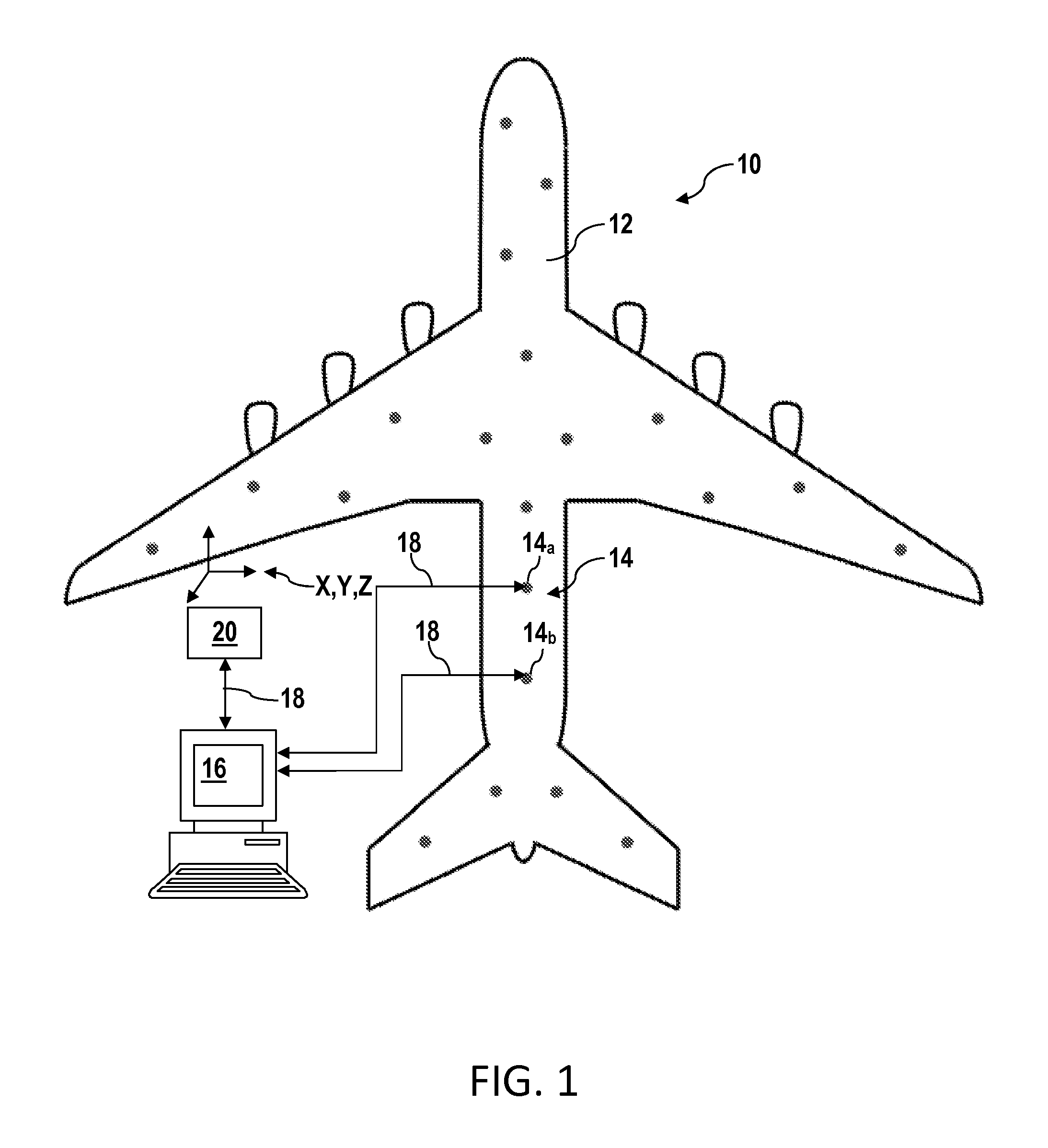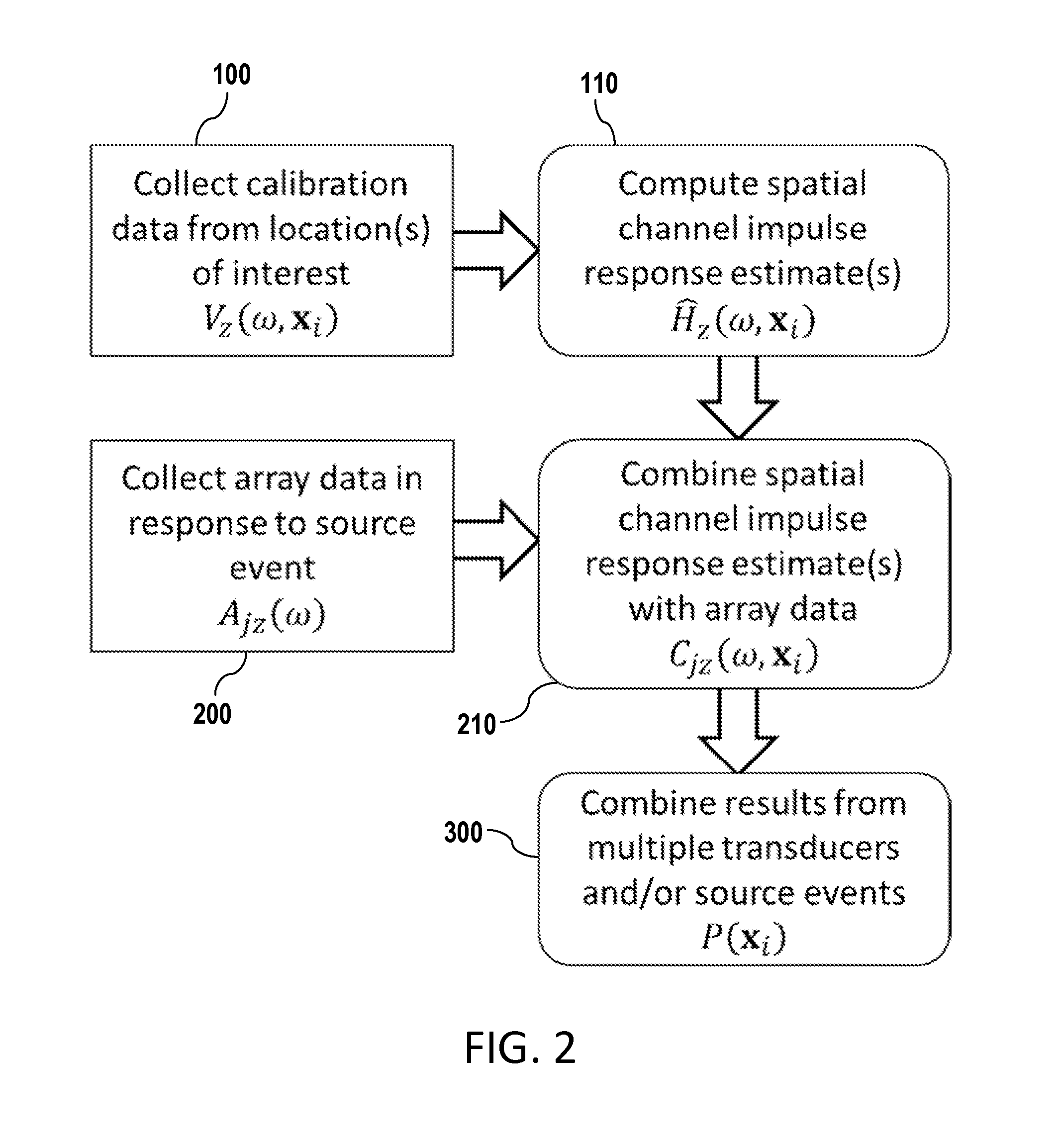Method and system for passive detection, localization and characterization of mechanical wave sources using ultrasonic guided waves
a technology of mechanical wave source and ultrasonic guided wave, which is applied in the field of passive detection, localization and characterization of mechanical wave source using ultrasonic guided wave, and can solve problems such as structural complexity, requiring propagation velocity profiles, and complicated source localization approaches
- Summary
- Abstract
- Description
- Claims
- Application Information
AI Technical Summary
Benefits of technology
Problems solved by technology
Method used
Image
Examples
Embodiment Construction
[0031]Some embodiments of the invention are discussed in detail below. In describing embodiments, specific terminology is employed for the sake of clarity. However, the invention is not intended to be limited to the specific terminology so selected. A person skilled in the relevant art will recognize that other equivalent components can be employed and other methods developed without departing from the broad concepts of the invention. All references cited herein are incorporated by reference as if each had been individually incorporated.
[0032]FIG. 1 is a schematic representation of a system 10 for multi-path passive detection, localization and / or characterization of mechanical wave sources using ultrasonic guided waves according to an embodiment of the invention. As shown in FIG. 1, the system 10 may include a spatially distributed array 14 of transducers 14a, 14b, etc., mounted on a structure 12 such as, for example but not limited to, an aircraft structure. Other structures may in...
PUM
| Property | Measurement | Unit |
|---|---|---|
| mechanical wave | aaaaa | aaaaa |
| frequency | aaaaa | aaaaa |
| elastic | aaaaa | aaaaa |
Abstract
Description
Claims
Application Information
 Login to View More
Login to View More - R&D
- Intellectual Property
- Life Sciences
- Materials
- Tech Scout
- Unparalleled Data Quality
- Higher Quality Content
- 60% Fewer Hallucinations
Browse by: Latest US Patents, China's latest patents, Technical Efficacy Thesaurus, Application Domain, Technology Topic, Popular Technical Reports.
© 2025 PatSnap. All rights reserved.Legal|Privacy policy|Modern Slavery Act Transparency Statement|Sitemap|About US| Contact US: help@patsnap.com



